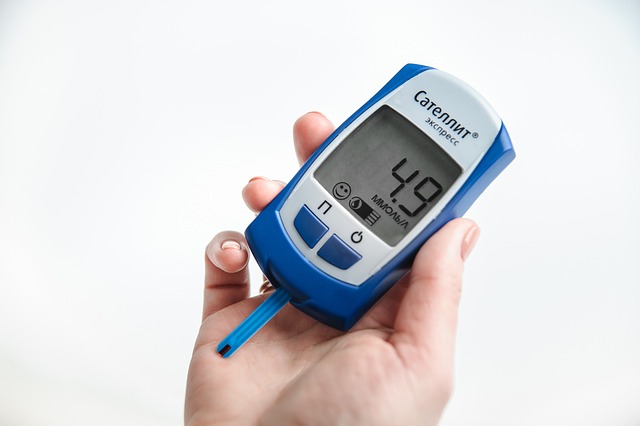Prediabetes affects 1 in 3 Americans. That might include yourself or someone close to you, and it can be hard to tell apart the myths about prediabetes from the facts! Misinformation about prediabetes can be dangerous while being informed can be life-changing.
Here are some prediabetes myths and the truth around them so you can make the best decisions for health.
Almost every choice you make day and night can affect blood sugar levels, and Lark Diabetes Prevention Program can guide you in healthy decisions. This personalized coaching program uses proven methods to lower risk for type 2 diabetes. See if you are eligible below.
Myth 1: Having prediabetes means you will definitely get diabetes
The statistics say that most people with prediabetes eventually develop diabetes, but there is an asterisk. People who do nothing about their prediabetes are almost sure to get type 2 diabetes, but people who manage prediabetes with lifestyle changes and, sometimes, medication can lower risk by over 50%. Even delaying the onset of type 2 diabetes is worthwhile, as it can help avoid complications of diabetes down the road.
Myth 2: Only the elderly need to worry about diabetes
Insulin resistance, which causes high blood sugar and diabetes, increases with age, but it can cause prediabetes and diabetes in younger adults, as well. More than 1 in 4 adults aged 18 to 44 years have prediabetes or diabetes, and more than 2 in 3 adults 65 and over have one of these conditions.
These days, being 65 is far from being "elderly," and it is still worth taking care of yourself to make sure the 10, 20, 30, or more years you may have left are as good as possible.
Myth 3: Medication is the only effective treatment for prediabetes
Some people with prediabetes take a medication called metformin (brand name: Glucophage) to improve the body's responsiveness to insulin. However, fewer than 1% of people with prediabetes are prescribed metformin.
Instead, lifestyle changes are most effective for treating or reversing prediabetes. A landmark showed that metformin was less effective than weight loss and physical activity at preventing type 2 diabetes. Lark Diabetes Prevention Program can help with small changes to lower blood sugar, including losing weight, getting physically active, and eating right.
Myth 4: People with prediabetes should not eat carbohydrates
"Carbohydrates" include a wide range of foods, and they have a wide range of effects on insulin resistance, blood sugar, and diabetes risk. Common sense says it cannot hurt to limit ice cream, cookies, bagels, potato chips, French fries, and fried rice. Science agrees, showing that an increased risk of diabetes may be linked to high consumption of foods that are high in added sugars and/or refined starches.
The opposite is true with higher-fiber, more nutrient-dense sources of carbohydrates. Whole grains, such as oatmeal, whole-wheat pasta and bread, and brown rice, fresh fruit, and sweet potatoes may all be linked to lower risk for diabetes. The trick is portion control.
Myth 5: If it does not have carbohydrates, it does not affect blood sugar
The thinking goes like this: carbohydrates from food are broken down into glucose during digestion, and the glucose goes into the bloodstream to raise blood sugar. Therefore, goes the reasoning, foods without carbs (say, high in protein and fat) do not affect blood sugar.
The truth is that what you eat matters, even if it does not impact blood sugar directly. Protein, for example, slows digestion and helps prevent blood sugar from spiking. Healthy fats can improve insulin resistance, which lowers risk for prediabetes and diabetes, while unhealthy fats can increase insulin resistance. Fried foods, fatty red meat, and processed meats are among the foods that may increase diabetes risk.
Myth 6: You have to lose a lot of weight to lower risk for type 2 diabetes
If the fear of going on a strict diet for the rest of your life to lose 50 or 100 lb. are preventing you from taking action now, there may be comfort in learning that losing just a few pounds can make a major difference in diabetes risk. Losing as little as 5 to 7% of body weight, often around 10 lb., can lower risk by over half. Better yet, you can lose that weight with small changes that do not make life difficult.
Myth 7: If you do not have symptoms, you do not have prediabetes
Prediabetes is nearly always asymptomatic. Classic diabetes symptoms, such as excessive thirst, weight loss, blurred vision, and fatigue usually only occur after diabetes has developed.
A blood sugar (blood glucose) test is the only way to know for sure if you have prediabetes, but you can get a pretty good idea of whether you are at risk for prediabetes or diabetes by taking a one-minute, 5-question risk test. If you are at risk, you may be eligible to participate in Lark's Diabetes Prevention Program through your healthcare plan or provider.











.webp)






